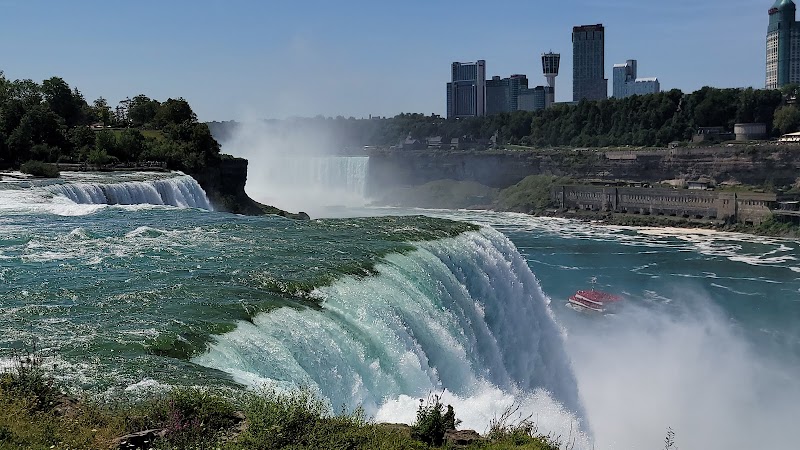
Explore Kaisariani’s unique mix of cultural history and natural beauty just outside Athens. These accessible forest trails combine gentle yet engaging terrain with rich local heritage, offering a rewarding outdoor experience for hikers of all levels.
Wear Sturdy Trail Shoes
The paths include loose dirt and rocky sections; proper footwear ensures stability and prevents injuries.
Carry Adequate Water
Water sources are limited on trails; bringing at least one liter per person keeps dehydration at bay.
Start Early or Late
To avoid midday heat and enjoy cooler temperatures and soft light for photography, plan hikes in early morning or late afternoon.
Check Weather Forecast
Sudden rains can turn trails slippery; verify local weather conditions before setting out to ensure safety.
Discovering Kaisariani: Cultural Trails and Nature Walks at Athens’ Forest Edge
Kaisariani, perched just east of Athens, offers a blend of leafy urban forest and rich local culture waiting to be explored on foot. The area’s walks are grounded in history yet led by nature’s quiet force: pine and chestnut trees crowd the paths, their branches shifting attentively with the wind. The terrain varies—mild inclines rise steadily around 150 meters above sea level, spanning distances between 4 to 7 kilometers, easing walkers into a steady rhythm.
Start your adventure at the Kaisariani Monastery trailhead, where ancient stone meets youthful greenery. The forest here doesn’t simply shelter you; it engages actively with every footstep, the soft carpet of needles pushing you forward while sunlight dribbles through an ever-changing canopy. The path winds through shaded groves, past remnants of WWII fortifications—a subtle, constant reminder of the land’s layered story.
For those tracking logistics, expect uneven dirt trails peppered with loose rocks and occasional slopes too steep for hesitant footing, demanding sturdy shoes and measured pace. Early morning or late afternoon excursions are best — cooler air and muted golden light improve focus whether on the map or the mossy stones.
Alongside trees and birdsong, the local scrub vegetation here speaks in bursts of scent—thyme, oregano, and wild sage often daring you to come closer. Water sources are scarce on the trail, so bringing at least 1 liter of water per person is essential. Whether you’re after leisure or a bit of pushing your limits, these routes balance accessibility with quiet challenges.
Kaisariani’s cultural trail offers more than nature: small tavernas and fruit stands sit just off the paths, inviting breaks flavored with honey-soaked delights and fresh figs from local growers. The community’s welcome is a blend of hospitality and lived history, making each stop a pause, not just a rest.
Navigating these trails is about respecting the environment as an active participant — the forest has stories, rhythms, and moods that respond uniquely to each visitor. It doesn’t yield, nor does it cease in your absence. Prepare accordingly with layered clothing, waterproof footwear during spring rains, and the readiness to shift plans if weather sharpens suddenly.
Whether you’re a casual day hiker longing for a brief escape or a well-seasoned adventurer seeking a change of pace, Kaisariani’s cultural and nature walks offer a compelling, practical experience. They invite a direct conversation between you and the land, framed by history and natural beauty that never asks for more than your attention and respect.
Nearby Trips
All Adventures
Boat Charters
Water Activities
Adventures near Kaisariani, Greece
Discover the unique and memorable adventures that make Kaisariani, Greece special.
Frequently Asked Questions
Are the trails in Kaisariani suitable for families with children?
Yes, many trails are moderate in difficulty and can accommodate children who are comfortable with some uphill walking and natural terrain. Families should plan for breaks and bring enough water.
Is there public transportation access to the Kaisariani Monastery trailhead?
Yes, several Athens Metro stations and bus lines service Kaisariani neighborhood, making it accessible without a car. The monastery area is a short walk from local transit stops.
Can I hike these trails year-round?
While the trails are generally open all year, spring and fall are the best seasons weather-wise. Winter can be wet and slippery, and summer heat requires careful timing.
What wildlife might I encounter on these hikes?
Look for native bird species like woodpeckers and warblers. The underbrush hides small mammals such as hedgehogs and occasionally foxes, mostly shy and active during quieter parts of the day.
Are there guided tours available for these cultural and nature walks?
Local guides often lead group hikes combining the natural landscape with historical insights about the WWII ruins and the monastery. Booking in advance through local tourism offices is recommended.
Are dogs allowed on the trails?
Dogs on leash are generally permitted. Make sure your pet is comfortable with uneven terrain and bring extra water and waste bags to keep the area clean.
Recommended Gear
Hiking Shoes
Provide grip and stability on rocky and varied surfaces.
Water Bottle (1+ liter)
Crucial to avoid dehydration, especially in warm weather.
Layered Clothing
Allows adjustment to changing temperatures and weather conditions.
Sun Protection (hat and sunscreen)
Prevents sunburn on exposed trail sections, particularly in peak sun hours.
Local Insights
Hidden Gems
- "The small, lesser-known summit viewpoint east of the monastery offers sweeping views over Athens with fewer visitors."
- "An almost forgotten WWII bunker hidden in the forest reveals the area's strategic importance during wartime."
Wildlife
- "Mediterranean tortoises quietly cross slow patches of trail."
- "Scrub warblers that flit quickly amid the dense undergrowth."
History
"The Kaisariani Monastery, built in the 11th century, played a critical role during WWII as a site of resistance and tragic events, adding layers of cultural significance to the hike."
